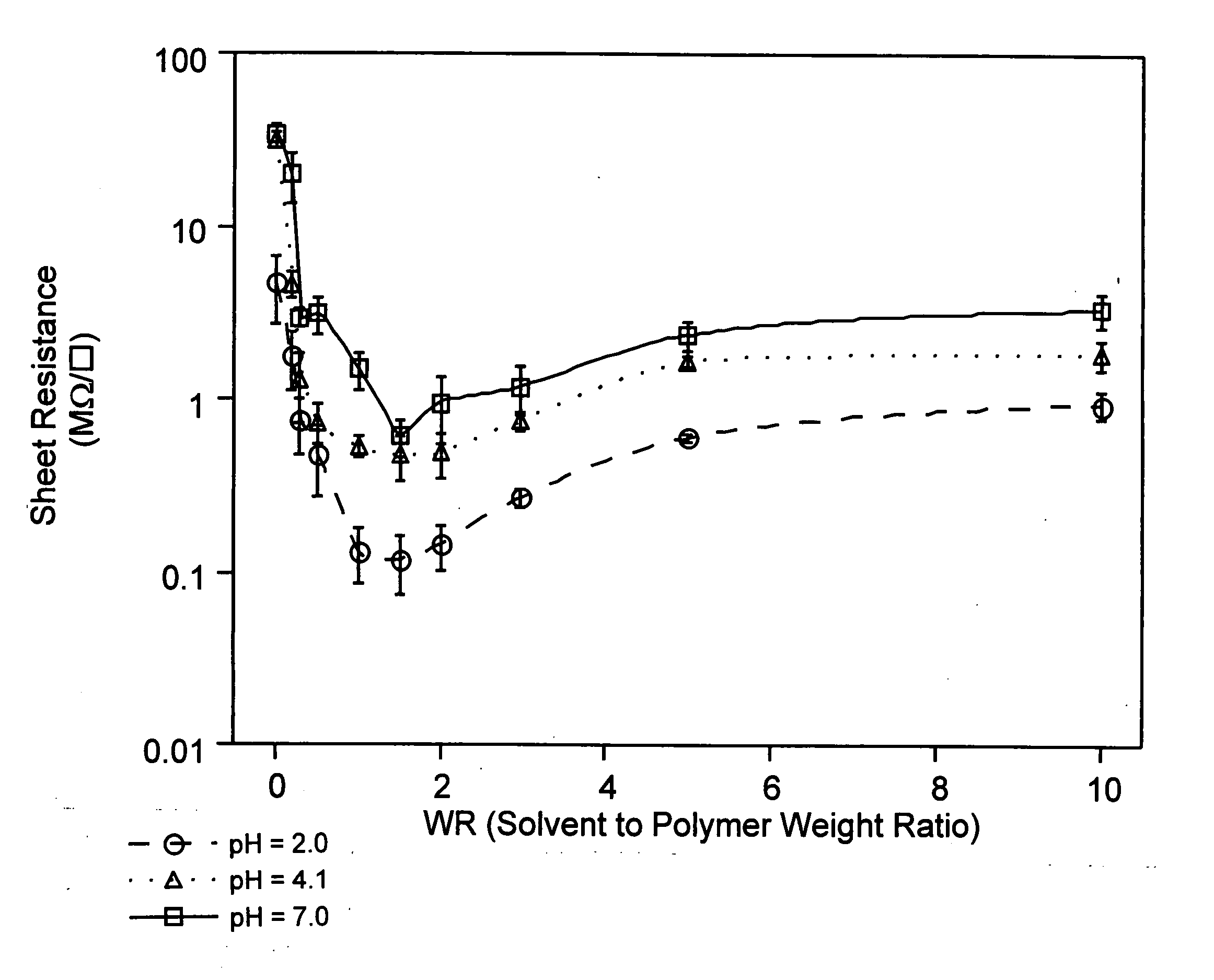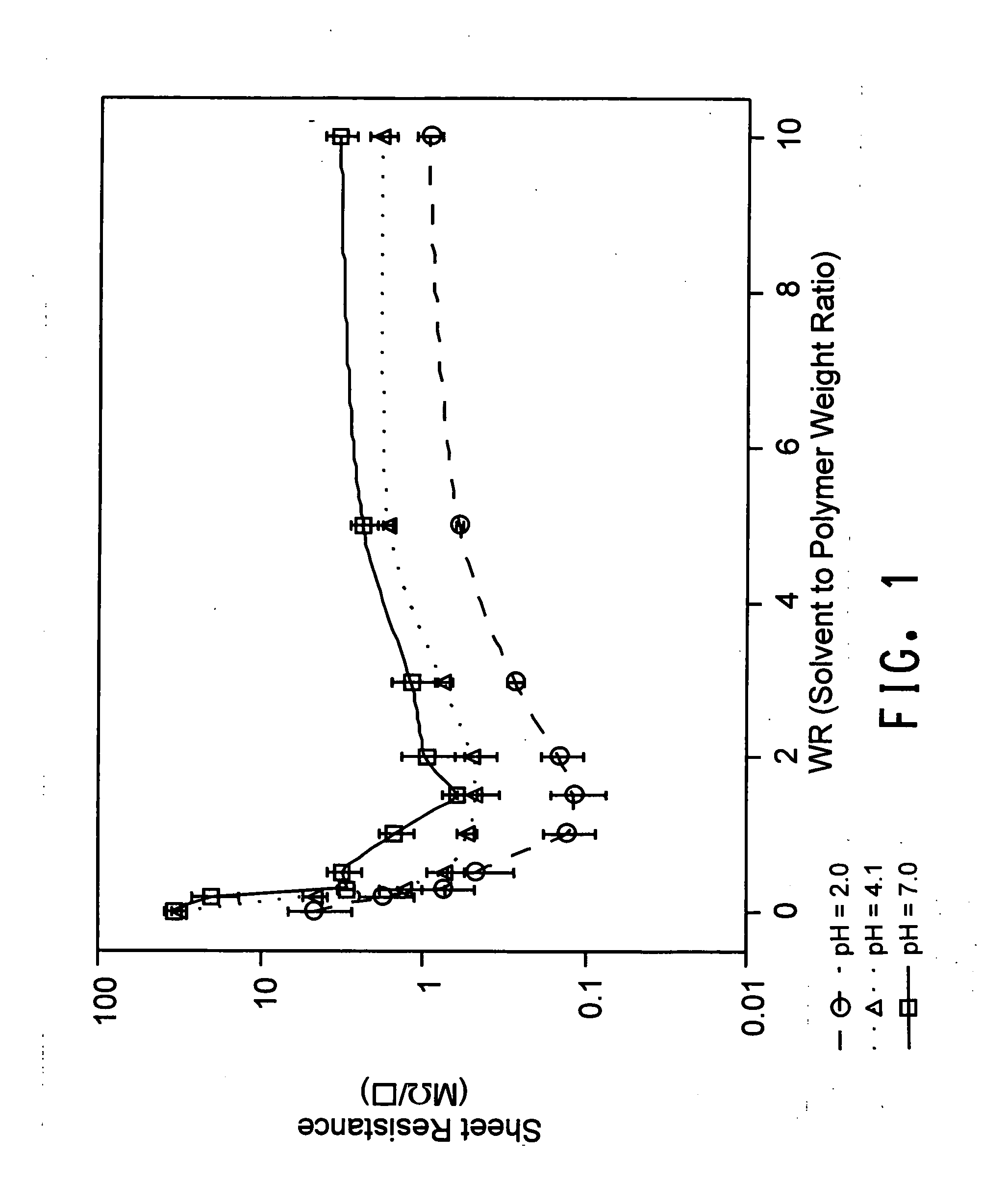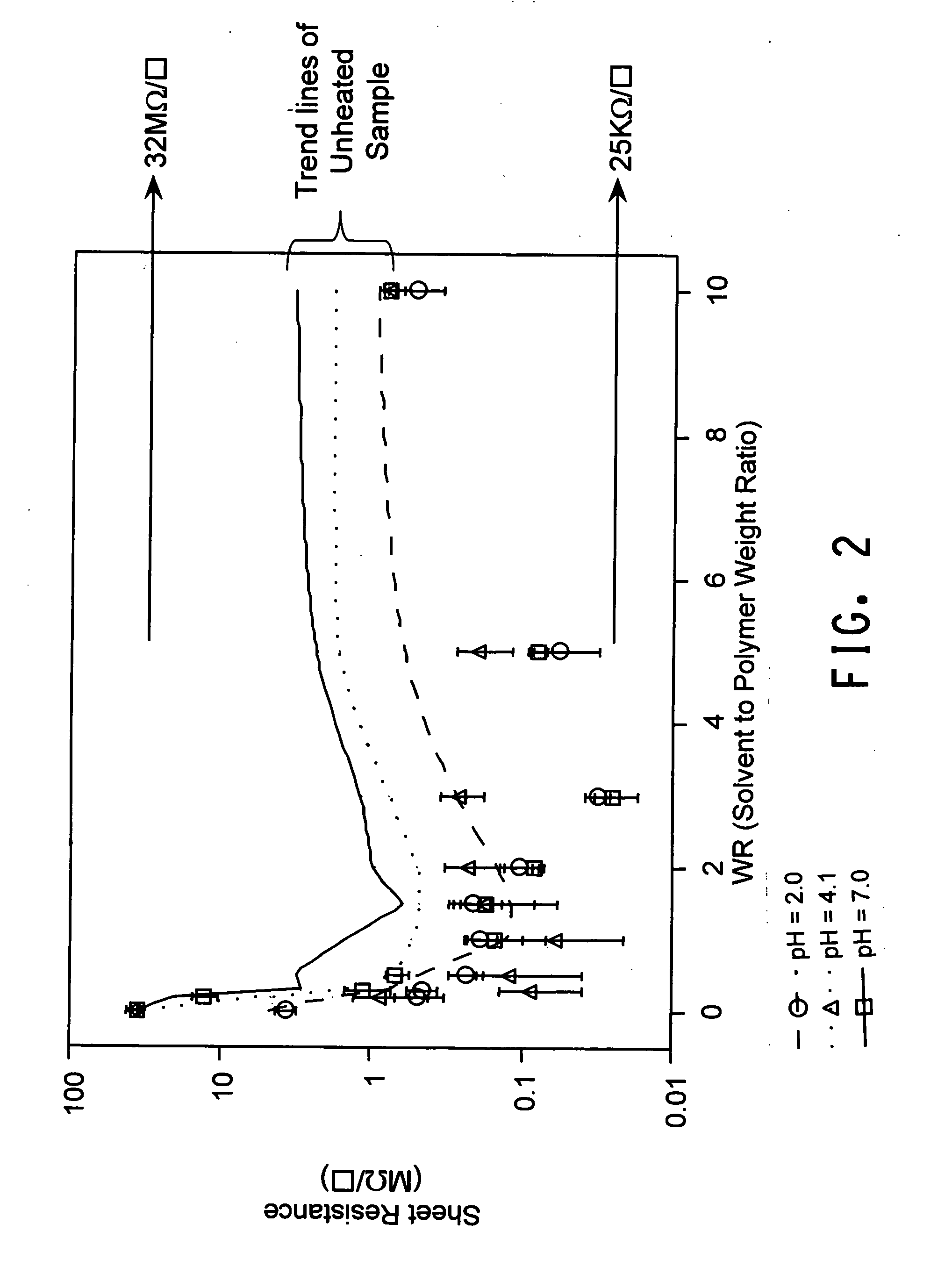Water dispersible polydioxythiophenes with polymeric acid colloids and a water-miscible organic liquid
a technology of water dispersible polymer sulfonic acid and colloids, which is applied in the direction of non-metal conductors, instruments, conductors, etc., can solve the problems of corrosion within the device, low ph of water soluble polymer sulfonic acid dispersions, and undesirable low ph levels of water soluble polymer dispersions
- Summary
- Abstract
- Description
- Claims
- Application Information
AI Technical Summary
Benefits of technology
Problems solved by technology
Method used
Image
Examples
example 1
[0113] This example illustrates the addition of diethylene glycol to PEDOT / Nafion® at different weight ratios (WR) in a pH 4.1 aqueous dispersion, and its effect on conductivity.
[0114] The preparation of an aqueous PEDOT / Nafion® dispersion is described below. A 25% (w / w) aqueous colloidal dispersion of perfluororethylenesulfonic acid with an EW of 990 was made using a procedure similar to the procedure in U.S. Pat. No. 6,150,426, Example 1, Part 2, except that the temperature was approximately 270° C. The dispersion was diluted with water to form a 12.5% (w / w) dispersion for the polymerization.
[0115] 471.3 g (57.13 mmoles of Nafion® monomer units) Nafion® aqueous colloidal dispersion, and 1689.5 g deionized water were massed into a 2000 ml jacketed three-necked round bottom flask. The mixture was stirred for 1 hr at a stirring speed of 425 rpm before the addition of ferric sulfate and sodium persulfate. A stock solution of ferric sulfate was made first by dissolving 0.0694 g ferri...
example 2
[0117] This example illustrates the addition of di-ethyleneglycol to PEDT / Nafion® at different WR in a pH 2.0 aqueous dispersion, and its effect on conductivity.
[0118] 402.8 g of the dispersion made in Example 1, which had a pH of 4.1, was adjusted to a lower pH by mixing with 29.7 g Dowex 550A (Dow Chemicals Company, Midland, Mich., USA), which is a base resin. The resin was washed with deionized water until there was no color. The resin containing dispersion was stirred for three hours and then filtered. The dispersion was then added with ˜30 g acidic Amberlyst 15 (Rohm & Haas Company, Philadelphia, Pa., USA) and left stirred for one hour. It was then filtered. The filtered dispersion was added with another 15 g fresh Amberlyst 15 resin and then stirred for 1.5 hrs and filtered. It yielded 334 g. pH was determined to be 2.0. 168 g of the dispersion was kept for Example 3 below. The remaining portion was used for determining the effect of DEG on conductivity. Sample preparation of...
example 3
[0119] This example illustrates the addition of di-ethyleneglycol to PEDOT / Nafion® at different WR in a pH 7.0 aqueous dispersion, and its effect on conductivity.
[0120] 168 g of the dispersion made in Example 2, which had a pH of 2.0, was adjusted to pH 7.0 by titration with a 0.4M sodium hydroxide solution. Sample preparation of different weight factor (WR) and thin films derived from them for conductivity measurement were conducted in the same manner as described in Example 1. As shown in FIG. 1 and FIG. 2, the highest conductivity was at WR of 1.5. AFM also shows that the film derived from the dispersion of 1.5 WR has a much smoother surface.
PUM
| Property | Measurement | Unit |
|---|---|---|
| weight ratio | aaaaa | aaaaa |
| weight ratio | aaaaa | aaaaa |
| boiling point | aaaaa | aaaaa |
Abstract
Description
Claims
Application Information
 Login to View More
Login to View More - R&D
- Intellectual Property
- Life Sciences
- Materials
- Tech Scout
- Unparalleled Data Quality
- Higher Quality Content
- 60% Fewer Hallucinations
Browse by: Latest US Patents, China's latest patents, Technical Efficacy Thesaurus, Application Domain, Technology Topic, Popular Technical Reports.
© 2025 PatSnap. All rights reserved.Legal|Privacy policy|Modern Slavery Act Transparency Statement|Sitemap|About US| Contact US: help@patsnap.com



